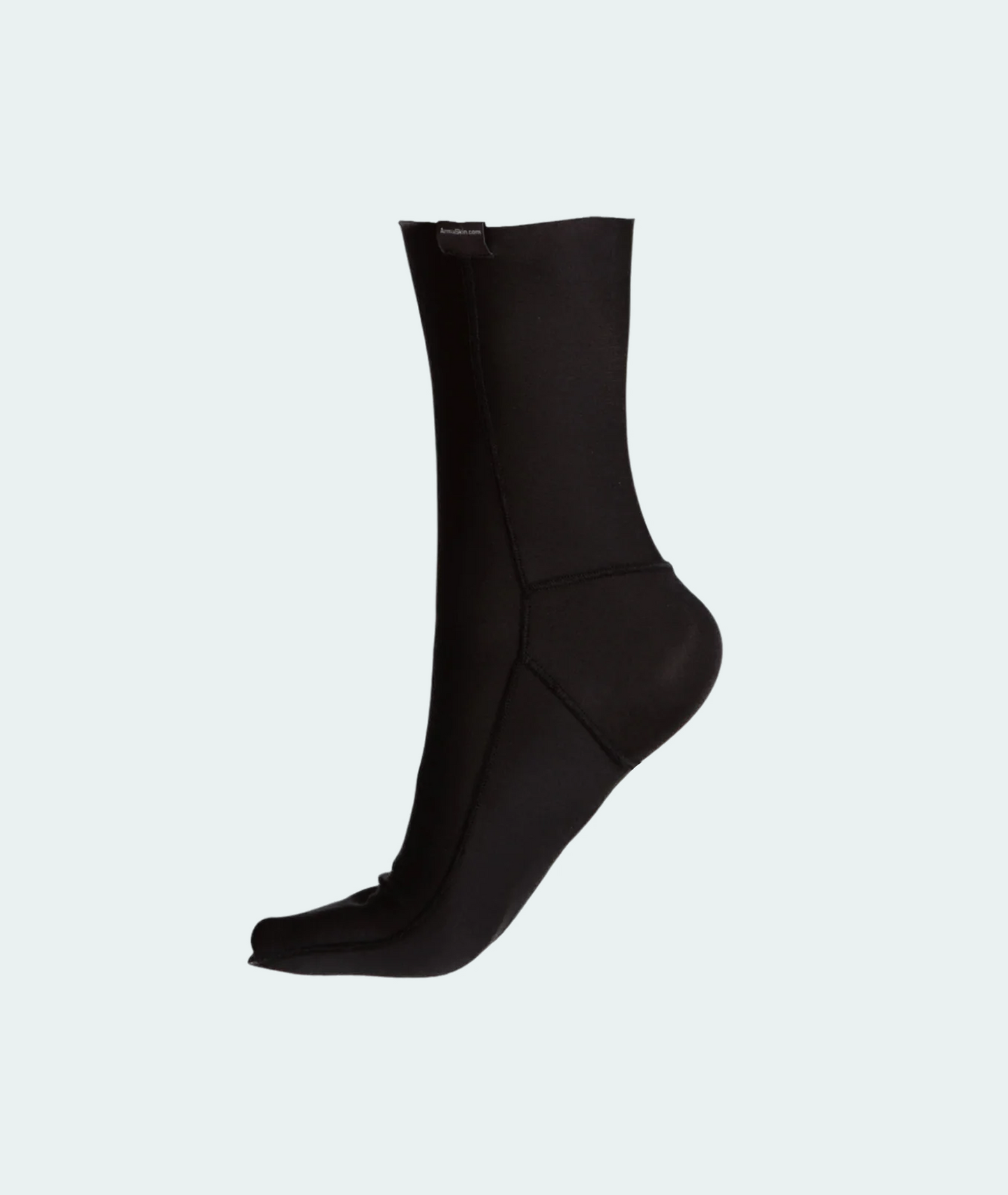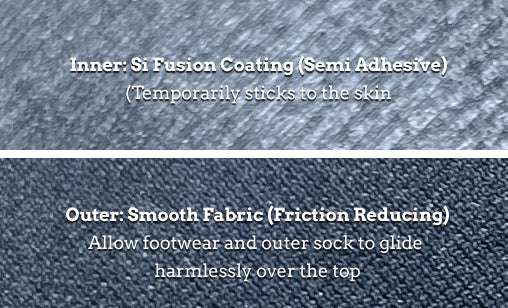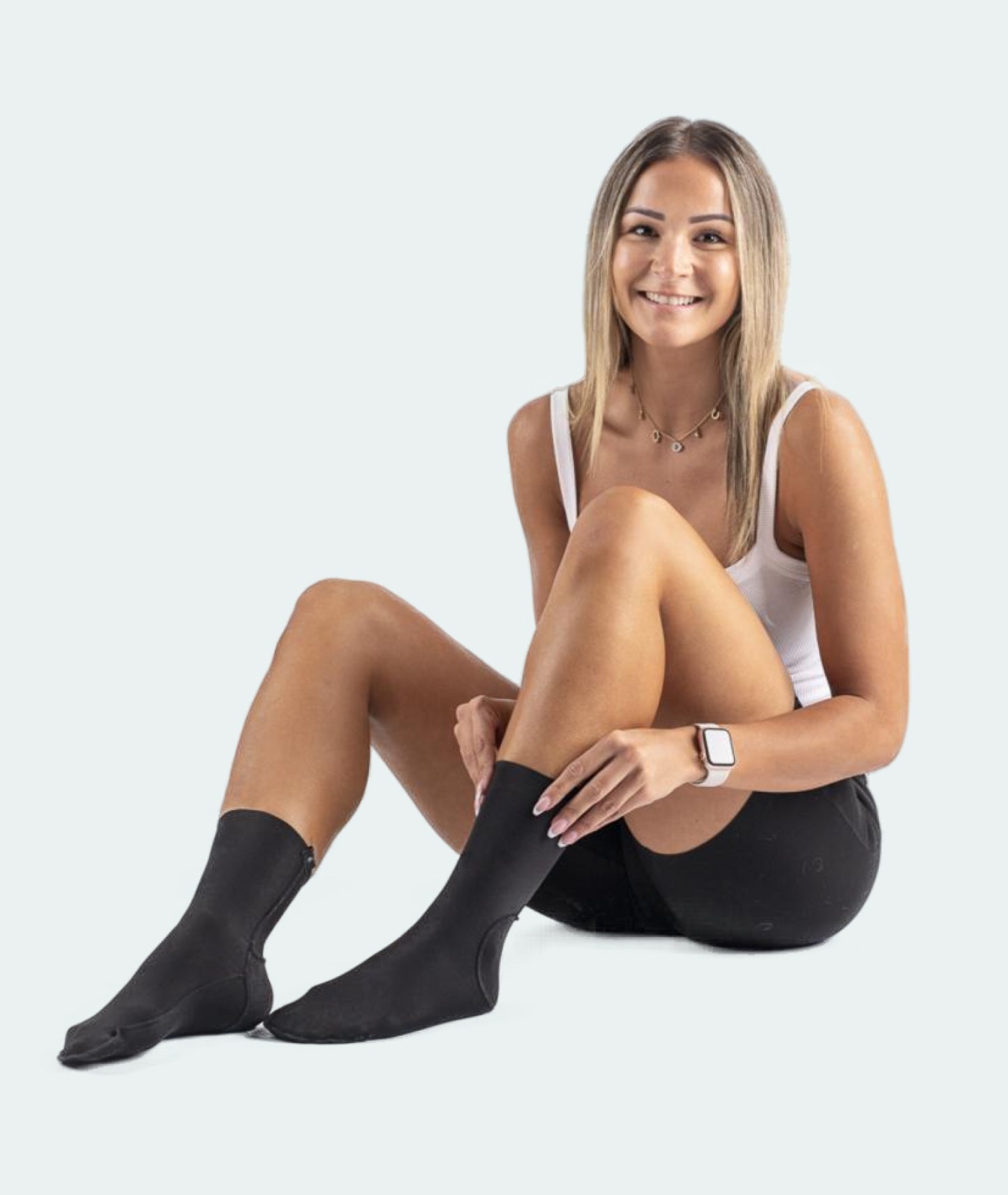
For centuries foot blisters have been the curse of long-distance travellers and athletes.
Today, feet are no less susceptible to blisters. If anything, less foot travel, an emphasis on fashion over function and technical efforts to avert blisters have likely taken away natural tendencies for the body to evolve skin with better blister prevention characteristics.
Surprisingly, delving into the relative mentions of blisters compared with popular endurance activities hiking and long-distance running using Google Ngram(1) suggests the premise that the battle against blisters is being won! (Ngram looks at the percentage of times a particular word has been used in printed books each year.) A rapid increase in the mentions of the activities of hiking and long distance running (the former capturing hiking and tramping and the latter capturing marathons, ultra-marathons, trail running etc), was not matched by a corresponding acceleration in the mention of blisters!

There is a plethora of blister prevention options on the market including cunning shoe designs, novel sock materials, powders, tapes, low friction pads, lubricants etc. This is backed up by practical advice on footwear selection and lacing options to minimise conditions which might impact feet while in use.
With today’s rapid rate of idea sharing via blogs and websites, the best options for hikers and endurance runners to prevent blisters are likely rising to the surface to coincide with the optimum science of blister prevention.
Before contemplating brand differences, the broader comparison is among the different blister prevention strategies at play.
In simple terms blisters occur when skin layers separate, and the body reacts by filling the void with healing fluid. The layers separate because shear forces generated between the hard “road” and the person’s bones are dispersed within the shoe, sock, and skin layers between those two hard surfaces.
A fundamental approach is to have the shear forces dispersed on a medium external to the skin. For example, a lubricant, a smooth surfaced tape, a liner sock, even just a well cushioned sock. The intent is that shearing movement can happen outside the skin surfaces.
A couple of old school solutions that come to mind are Vaseline and Elastoplast. Ngram suggests that Vaseline usage has declined which is consistent with the appreciation that while Vaseline initially might work very well, after prolonged wear it creates more friction on the skin unless it is reapplied. Whether Elastoplast is being used as a preventative or for first aid the direction is clearly downwards. Additionally, a popular first aid for blisters, Compeed, also seems in decline over the last 30 years.



Don’t Let Blisters Slow You Down!
Discover the ultimate solution with ArmaSkin Anti-Blister Socks. Designed with advanced friction-reducing technology, these socks keep your feet dry, comfortable, and blister-free – no matter the challenge.
Shop NowThe product choices fall into two categories: topical application or general application. Whether to apply a tape, lubricant or packing to a likely trouble spot, or to wear an all covering protection as in a liner sock. Admittedly some taped feet solutions end up with most of the foot covered in tape.

With solid evidence (4) that cotton socks, which absorb and hold moisture, increase the occurrence of blisters a primary response has been to try to keep the feet dry by using fabrics that can efficiently wick moisture away from the skin. Moisture-wicking fabrics are fabrics with the ability to pull moisture away from the skin using tiny, built-in capillaries. Moisture is drawn to the exterior of the fabric where it can evaporate. These are generally synthetics like polyester or natural fibres like wool and bamboo. Some synthetics claim enhanced wicking. Several socks use Coolmax which is a polyester made with fibres which are shaped with four channels which are claimed to shift moisture faster than round fibres. Others use Thermolite which is a hollow polyester which acts as a good insulator for warmer feet.
Among all the alternatives, Ngram indicates that the liner sock concept gained recognition and is taking hold. The basic idea is that a liner sock, i.e. a thin second sock worn under a normal sock, provides a shear breaking layer before shear forces get to the skin layers. The popularity of liner socks is due to its blister prevention performance as well as convenience, comprehensive foot coverage, and reusability.

Several sock brands have added a liner sock to their range and there are even technically designed liner socks like ArmaSkin.
There are several liner sock options which incorporate a range of performance enhancing features.
So, what are the characteristics that make a liner sock effective at beating blisters?

There are many brands of liner socks on the market. Here is a sampling of some of the most popular lines and an indication of the materials.

The following table provides a dissection of some of these most popular liner socks and their points of difference. Points of difference are highlighted by the manufacturer as additional features they have employed to prevent blisters or enhance comfort.

Only the ArmaSkin liner sock deliberately creates a friction differential between the outer and inner layers of the liner. In this case a 3:1 friction differential result from its silicone inner surface compared to its polyester external surface (2)
All brands claim wicking moisture away from the skin as a key attribute, which in turn implies their usefulness in wet conditions. Some rely on natural fibre features like wool, which is recognised as an effective wicking material, while others utilise specific technical materials. ArmaSkin uses SiFusion, its proprietary name for their application of silicone to one side of the ArmaSkin polyester spandex fabric. Wigwam uses Coolmax polyester which has a 4-channel fibre shape(3) engineered to encourage the flow of moisture. Outdoor Obsession uses Thermolite which is a hollow polyester fibre which makes it a good insulator.
All brands claim wicking moisture away from the skin as a key attribute, which in turn implies their usefulness in wet conditions. Some rely on natural fibre features like wool, which is recognised as an effective wicking material, while others utilise specific technical materials. ArmaSkin uses SiFusion, its proprietary name for their application of silicone to one side of the ArmaSkin polyester spandex fabric. Wigwam uses Coolmax polyester which has a 4-channel fibre shape(3) engineered to encourage the flow of moisture. Outdoor Obsession uses Thermolite which is a hollow polyester fibre which makes it a good insulator.
ArmaSkin makes a claim that its liner provides compression while all socks apart from ArmaSkin focus on the characteristic of either keeping feet warm or cool.
While the Injinji product is the only one coming standard in toe sock format, ArmaSkin in 2020 released a toe sock version.
Tapes:
While Elastoplast seems to have dropped off in popularity, a notable improver over recent years is Leukotape. While it may have applications far wider than blister prevention it is nevertheless a popular means of either preventing or protecting blisters. The essential features of Leukotape are its relatively slippery outer surface and its strong adhesion to the skin.

Practical considerations:
In hiking, a very generalised scenario is that the hiker is wearing relatively heavy-duty shoes or boots, some comfy socks and is likely carrying a 5-10kg pack (more if doing multi-day hiking). They will be traversing uneven ground, maybe passing through water, and include a good selection of hills. Average speed could be 3-5 kph and this would be interspersed by short rest breaks. A few hours day hiking, equating roughly to a 10-15 km hike. Approaching 10km feet will have swelled about half a shoe size which would have amplified any poor shoe fitting or rough internal shoe edges.
In running, shoes will be lighter. Maybe runners will be carrying 1kg of water plus other odds and ends eg phone. Distance will vary but speed will be more than 5 kph and the foot strike pattern will be quite consistent and repetitive. Exertion might generate similar amounts of sweat and the runner will likely not have rest breaks. For fitness purposes most runners would be tackling 5-10km runs lasting 30-90 mins, so the prevalence of blisters is not as high as for hikers covering the same distance.
However, once the runner is tackling trail running and marathon / ultra-distances the calculation changes. Rougher surfaces, maybe carrying a heavier load, more irregular foot strike and of course longer time on the path or trail all add to the demands on the feet. Footwear might be a little heavier and a more comfortable sock might be used (although that is very much a personal choice).
Around these distances and times, and especially if under competitive pressure (perhaps self-imposed), the benefits of not having nagging hotspots or painful blisters is immense. In addition, subconsciously adjusting a gait can increase the risk of another serious injury by around 50%.
All the liner socks seemed to be machine washable. Since they are thin and have excellent wicking characteristics, they will air dry overnight (exception being in sub zero temperatures).
Being in a sock format, all the varieties can be considered easy to wear. If anything, there is a slight downside to the Injinji and the ArmaSkin which take a little longer than the normal sock to put on due to their unique characteristics. That factor may be a consideration in events like triathlons where an extra second or two to put socks on at the swim/bike change may be critical.
Liner socks provide a great advantage over taping in that they allow easy inspection of any hotspots mid hike or run. And then easily rolled back on to provide protection. Those using tapes on the other hand are reluctant to remove tape because of the risk of damaging soft skin. In addition the nuisance of re-taping the foot as well as the need to start carrying used tape makes hikers more inclined to hope for the best and not attend to hot spot issues mid hike, if at all, raising the prospect of blister creation.
Mid hike, there is no reticence to remove a liner sock to allow feet to have a rejuvenating dousing as well as a clean up to remove hidden dirt.
A further practical consideration when considering tapes is that should the hike or run include sustained wet conditions some tapes exhibit a tendency to loosen and potentially fold over as they become wet. In such circumstances the fold can exacerbate rubbing on the skin and thus stimulate blister formation.
Conclusion:
A well chosen blister prevention strategy and product can deliver relatively fewer blisters and thus a much more satisfying hiking or endurance running experience.
Notes and References:
1. www.Books.google.com
Caution: While Ngram statistics may accurately reflect the frequency of particular words in published books, the context of mention cannot be easily inferred. For example, blisters are not necessarily foot blisters, they could be hand blisters. And some solutions may be applied to other end uses, such as Vaseline being used as a baby product. Also, generic terms like liner sock will gain greater numbers than one brand within the Liner sock market.
2. University of Central Lancashire - Axis Podiatry - ArmaSkin Anti-Blister Sock -2016
3. Critical Evaluation Of Wicking In Performance Fabrics, Craig Burton Simile, Georgia Institute of Technology, December 2004
4. Friction Blisters and Sock Fibre Composition Kirk M Herring, Douglas H Richie California College of Podiatric Medicine August 1990














